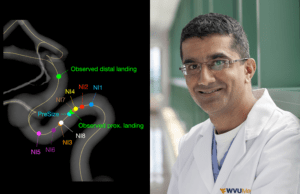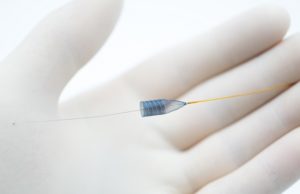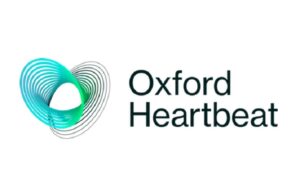Tag: flow diverters
Mentice gains US FDA 510(k) clearance for Ankyras software
Mentice recently announced that Ankyras, the company’s clinical decision support application, has received 510(k) clearance from the US Food and Drug Administration (FDA). The...
INSPIRE-A registry helps pave way for standardised assessment of flow-diverter imaging...
This advertorial is sponsored by Medtronic.
As a prospective, independently adjudicated registry boasting a highly comprehensive patient dataset, INSPIRE-A is a “very unique” phenomenon in...
Study finds “eye-opening” variability across physician estimations of flow-diverter deployment
A comparative study recently demonstrated the promise held by PreSize Neurovascular (Oxford Heartbeat) software in consistently and accurately making predictions about flow-diverter placement in...
Observation, creativity and happy accidents: Transitioning from clinical life to industry...
When it comes to advising young physicians on how to navigate the more commercial, industry-entwined commitments that their career will most likely bring further...
Continued improvement of flow diverters and intrasacculars holds key to truly...
Laurent Pierot’s (Reims University Hospitals, Reims, France) long career in the treatment of intracranial aneurysms predates not only what many consider to be the...
Flow-diverter performance “comparable” between PComAs and other supraclinoid aneurysms
The concluding findings of a systematic review and meta-analysis published in the journal Neurosurgery indicate that flow-diverter performance in posterior communicating artery (PComA) aneurysms...
Pipeline Flex embolisation device deemed safe and effective in complex intracranial...
A retrospective study from China has concluded that the Pipeline Flex embolisation device (Medtronic) is safe and effective in the treatment of complex intracranial...
Flow diverting, stenting and beyond—HPC technology offers “limitless” potential in neurointervention
This advertorial is sponsored by phenox.
Following the publication of a study assessing the use of Hydrophilic Polymer Coating (HPC) technology with the p64 MW...
Similar complication rates observed following DAPT discontinuation within and past 90...
The duration of dual antiplatelet therapy (DAPT), either 30–90 days or more than 90 days, following implantation of a flow diverter in cerebral aneurysm...
Pedro Lylyk
Pedro Lylyk’s work and achievements in the neurosurgical field have spanned several decades, and range from a momentous intracranial stent placement in 1996, to...
BRAIN 2021: In silico clinical trials likely to play complementary role...
In silico studies involving virtual participants hold great potential in the neurovascular field—and the broader medical industry—with their future role in the generation of...
Large prospective study demonstrates high efficacy and low mortality rates with...
The Diversion-p64 study—the largest prospective study using the p64 flow modulation device (phenox) to date—has demonstrated that the device has a high level of...
Evasc Neurovascular announces new generation of eClips bifurcation flow diverter
Evasc Neurovascular has announced the third generation of the eClips device. The device is innovated for more effective treatment of intracranial bifurcation aneurysms, facilitating...
ESMINT 2021: COATING study “badly needed” to assess surface modification of...
This year’s Congress of the European Society of Minimally Invasive Neurological Therapy (ESMINT 2021; 8–10 September, Nice, France and virtual) saw details of the...
“Welcome and exciting”: Evidence mounts in favour of flow diversion technologies
Multiple pieces of clinical research supporting the use of flow diverter devices to treat intracranial aneurysms have come to light so far in 2021....
Balt completes enrolment in international study of low-profile Silk Vista flow...
Balt today announced that it has completed enrolment in its FIRST study—an observational, prospective, multicentre, international, single-arm study aiming to collect safety and efficacy...
PreSize Neurovascular software launched at first UK NHS hospital
Doctors at St George’s Hospital in London, UK are set to become the first within the UK National Health Service (NHS) to begin using Oxford Heartbeat’s...


















